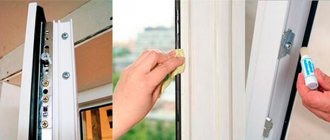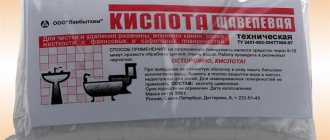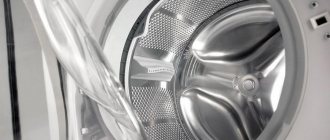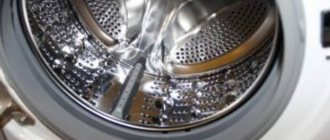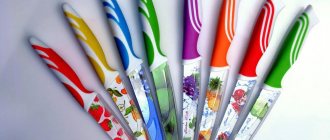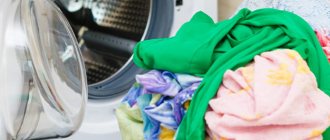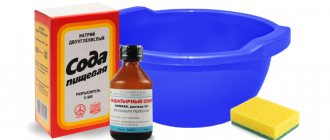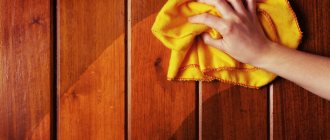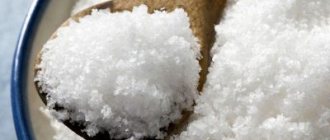Plastic is a material, products from which are present in every apartment.
Over time, the white color turns yellow and things begin to look less attractive. To restore their snow-white appearance, you can use popular folk recipes or use special preparations.
Read more about how to remove yellowness from plastic in the article.
Acetone
Not the safest way for you and your plastic.
Before using acetone, test how it reacts with this type of plastic on a small area. If the reaction does not take place and the plastic does not dissolve, then you can safely apply acetone to a cotton pad and wipe the yellowed areas. This method is more suitable for dense and non-bending plastic.
Features of removing yellowness
Various interior items made of plastic have their own characteristics of cleaning from dirt. This should be taken into account when choosing cleaning products. Let's look at the best way to wash different plastic products.
Double-glazed windows
Plastic double-glazed windows are very unpretentious. To bleach them from yellowness, you can use almost any means. There is only one exception to this rule - you cannot use abrasive substances for hygienic procedures. Small particles can leave micro-scratches, the presence of which only contributes to the formation of yellowness.
Technique
To prevent electrical appliances from becoming permanently covered with a yellow coating, they must be cleaned periodically. This should be done at least once a week. This is especially true for household appliances installed in the kitchen, such as refrigerators, microwaves and kettles. After all, such objects not only become yellowish, but also become contaminated by food residues.
Dishes
Plastic utensils are very practical and durable, but, like other products made from this material, they are not immune to yellowing. In such situations, you should not spend money on new dishes. All you need to do to keep your cutlery as long as possible is to clean it well after each use and store it in a dark place, protected from sunlight. Since food stored in plastic containers enters the human body, it is strictly forbidden to remove yellowness using aggressive substances such as acetone or rubbing alcohol. It is better to use citric or acetic acid for these purposes.
Hydrogen peroxide
If the plastic is not very yellowed, then just wipe it with hydrogen peroxide. This can be done with a cotton pad or sponge. Peroxide does an excellent job of removing soot, grease, smoke, and most other household contaminants.
To increase the effectiveness of the product, you can make a special solution. Mix hydrogen peroxide (1/2 cup) and any stain remover (1 tablespoon is enough) with water, then rinse the surface.
What is the cause of yellowing?
The loss of plastic's original whiteness may be due to several factors. This is due to improper care of the material and exposure to the environment.
The main causes of yellowing:
Temperature changes. Sudden changes in temperature over time lead to the appearance of microcracks on the surface and destruction of the top layer with the dye included in it.- Burnout. Direct exposure to sunlight is the most common cause of yellowness.
- Wrong choice of cleaning products. First of all, this applies to compositions that are aggressive in their impact.
- Settlement of soot and other pollutants. This problem is typical for products located in the kitchen, in industrial premises or in places with poor ecology.
- Low quality material. Violation of technology in the production of plastic can only manifest itself over time. One of these manifestations is yellowing.
If the surface of the plastic does not have serious integrity violations, it is quite possible to lighten it.
Dish detergent
One of the gentle ways to get rid of yellowed plastic is to clean it with a soapy solution. This type of cleaning copes well with light yellowing, which occurs due to soot or grease deposits.
To prepare the solution, you will need dishwashing detergent and dissolved laundry soap. Mix soap and detergent and add water, then use a soft brush to scrub the surface.
Benefits of laundry soap
This product has a pungent odor and a good cleansing effect. To do this, just use a small amount of soap, a soft sponge and warm water.
The alkaline composition of this product ensures the rapid destruction of fatty deposits and deep dirt and forms a protective film on the surface.
- To do this, it is enough to use 300 g of laundry soap and 5 liters of warm liquid.
- What composition can be used to clean kitchen furniture, window sills and plastic dishes.
- After soap treatment, it is recommended to wipe all surfaces with a damp cloth.
Stain removers and bleaches
Yellowness and other stains from plastic can be removed using bleach and a chlorine stain remover. Such products should be used very carefully, and be sure to wear a mask and gloves. People prone to allergies should not use this method.
The solution is made like this: dissolve one tablespoon of bleach or stain remover in one liter of water. You need to soak for 11-12 hours, then rinse the plastic parts and wipe dry.
How to return white color to plastic?
Often, plastic can be restored to its original whiteness using products that can be found in the household. If the yellowness cannot be eliminated the first time, the procedure should be repeated.
Laundry soap
Laundry soap removes yellowness caused by greasy deposits. To restore the original color, you will need to finely grate one block. Then you need to pour 200 milliliters of heated water into the soap. The resulting mixture should be applied evenly to the yellowed areas and left for 30 minutes. After the specified period has expired, the plastic must be rubbed with a brush and the remaining foam must be removed with a rag.
Ethanol
This product combats yellowing of the material caused by exposure to sunlight. Before the procedure, it is recommended to treat a small area of the plastic product with alcohol and check whether this liquid is harmful to the material. After removing stains, it is recommended to rinse the material with clean water.
Washing powder and soda
To remove yellowness you will need to mix:
- 500 milliliters of heated water;
- a tablespoon of soda;
- a tablespoon of powder.
This mixture is applied to problem areas and left for 6 hours and then washed off.
Cosmetics for cars
Automotive plastic cleaners can remove old stains, including yellow stains. It is necessary to treat plastic products with car cosmetics in accordance with the instructions for the product.
Computer wipes
These wipes are impregnated with a mixture that eats away grease and other contaminants. Therefore, these products are used to clean plastic.
Hydrogen peroxide
This composition bleaches various materials. The product must be applied to a rag and then treated the yellowed surface. Up to four such procedures will be required to restore whiteness.
Acetone
Acetone is rarely used, and usually as a replacement for other bleaching compounds. This product is not recommended for processing low-quality plastic. To restore yellowed plastic, simply wipe the problem areas with a cotton pad soaked in acetone.
See also
Is it possible to iron jeans and how to do it correctly at home
Products with chlorine
Chlorine has an aggressive effect, due to which it eliminates, among other things, old contaminants. Whiteness or another similar product helps remove yellowness from plastic. If necessary, chlorine-containing liquids can be left for a few minutes and then rinsed with water.
Aerosol paint
If the yellowness appears due to microcracks, then the described means cannot eliminate such stains. In such cases, it is recommended to paint over problem areas using spray paint of the appropriate shade.
Tooth powder with chalk
To remove yellow stains, you will need to mix a tablespoon of crushed chalk and the same amount of tooth powder. After this, you need to add water to the composition, achieving the formation of a paste-like mass. The resulting mixture should then be applied to the yellow spots, left for 15 minutes and rinsed off.
Citric acid with chlorine
To bleach plastic, you need to mix both substances in equal proportions. The resulting composition should be applied to problem spots, left for half an hour and rinsed with water.
Special means for recovery
Various store-bought products available in the form of sprays help get rid of yellowness on plastic. You can also use chlorine-soaked wipes for these purposes.
Bleach
In addition to Whiteness, other products that contain chlorine are used to bleach plastic.
Alcohols
Plastic usually does not react to alcohols and alcohol solutions, so they can be safely used for bleaching. To do this, put on rubber gloves, pour a little alcohol onto a cotton pad, and walk over the yellowed surface.
After treatment, it is not necessary to wash off the alcohol, but it is recommended to ventilate the room.
Why does plastic turn yellow?
There can be many reasons why plastic objects turn yellow.
- Oxidation. Plastic is a synthetic polymer that oxidizes when exposed to oxygen. This happens slowly but inevitably.
- Ultraviolet radiation. Windows most often suffer from this, so light stabilizers are added to high-quality structures during manufacturing.
- Temperature changes. They negatively affect the properties of the material, and it loses its former whiteness.
- Exploitation. In a room where people smoke or cook without an exhaust hood, nicotine deposits, soot and grease appear on surrounding objects, which give an untidy appearance.
- Incorrect care. Overzealous cleaning with abrasives and hard brushes leaves damage. Dirt gets into them, and the shade of the product changes.
- Poor quality raw materials. Recycling waste is a noble cause, but in order for plastic to have a white color, it is necessary to use certain additives, and some manufacturers neglect this.
If you come across a copy made of low-quality material, then, alas, nothing can be done. But in all other cases, you can try to restore its former appearance.
Perhydrol
This product can be found in almost any pharmacy. Use perhydrol carefully and ensure that it does not heat up. Soak a sponge in perhydrol and wipe the plastic surface 3-4 times. Be sure to rinse the plastic with water afterwards!
For the best effect, mix perhydrol with stain remover and a liter of water.
Special formulations
Today in home departments you can find different types of household chemicals specially designed for treating plastic surfaces.
These include:
- Thick spray;
- Wet wipes;
- Gel compositions.
At the time of processing, chemical compounds have a cleansing effect. In addition, they form a thin film, which helps protect the plastic from further contamination. To maintain a snow-white color, it is recommended to regularly wet surfaces using various chemicals.
These types of cleaners allow you to quickly fix the problem and have a convenient container and dosing system. As a result, it is possible to control the amount of cleaning composition.
However, frequent use will lead to the accumulation of chemical components on the surface of the cookware.
Dye
It happens that there is nothing you can do to help plastic. Initially, the quality was poor, or the yellow spots looked more like brown. The only way for such cases is spray paint. Perhaps this is the easiest and fastest option for getting rid of stains on plastic.
There are many ways to return plastic to its original color, and there is an option for each case. All the methods presented above are available, and you can easily use them at home, the main thing is not to forget about personal protection. Now your plastic is white again, and if it turns yellow again, you know what to do.
Remember, you should wear gloves and a mask when working with chemicals. Take care of your health.
General recommendations
To clean the plastic of different products, follow the recommendations:
- Clean windows and sills from top to bottom.
- Remove microwave stains with citric acid.
- Turn off the refrigerator before cleaning. Use products without a pungent and persistent odor so as not to spoil the products.
- To clean your computer and other equipment, use special wipes.
- Remove the grilles from the air conditioner and rinse the filter with water. Wash the lid and plastic parts with soda.
- Clean surfaces in the toilet, bathroom and shower stall with vinegar or citric acid.
- In a car, in addition to specialized products for removing yellowness, you can use soda and washing powder.
- Use citric acid or vinegar to remove stains in the washing machine.
- Use soft rags and sponges that will not scratch the surface of the plastic.
- When using chemicals, wear masks and gloves.
- Ventilate the room.
- Study the manufacturer's instructions on how to care for plastic.
